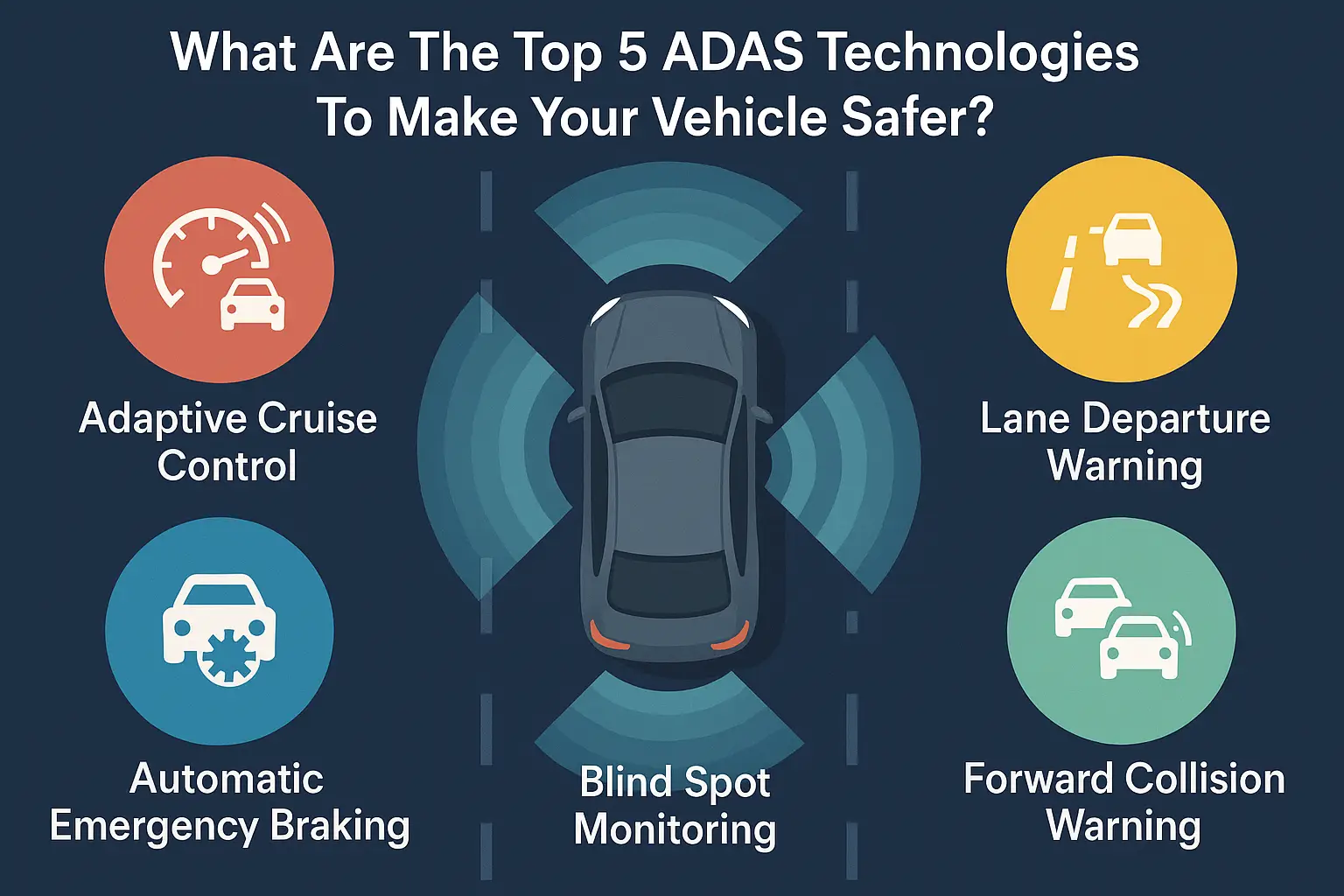Are you ever worried about the split-second mistakes that can happen on the road? A moment of distraction or a hidden vehicle can lead to a dangerous situation. These advanced systems are designed to be your ever-watchful co-pilot.
The five most crucial ADAS (Advanced Driver-Assistance Systems1) are the 360° Surround View Camera, Automatic Emergency Braking (AEB), Blind Spot Detection (BSD), Lane Keeping Assist (LKA), and Adaptive Cruise Control (ACC). Each uses a network of sensors to identify and react to potential dangers, adding a vital layer of safety.

These technologies are more than just fancy gadgets; they are fundamental changes to how we drive and stay safe. They represent the shift from passive safety (like airbags) to active safety, where the car actively helps you avoid an accident. But to truly trust them, you need to understand how they work, what they see, and where their limits are. Let's dive deep into each system.
How Does a 360° Surround View Camera2 System Eliminate Blind Spots?
Do you feel a surge of anxiety when squeezing into a tight parallel parking spot? The fear of scraping a rim or bumping a hidden curb is real. A 360° system gives you the superpower of seeing everything at once.
A 360° surround view camera, also known as a bird's-eye view system, stitches together video from four different cameras into a single, top-down image. This gives you a complete and intuitive view of your immediate surroundings, making low-speed maneuvers like parking incredibly safe and simple.
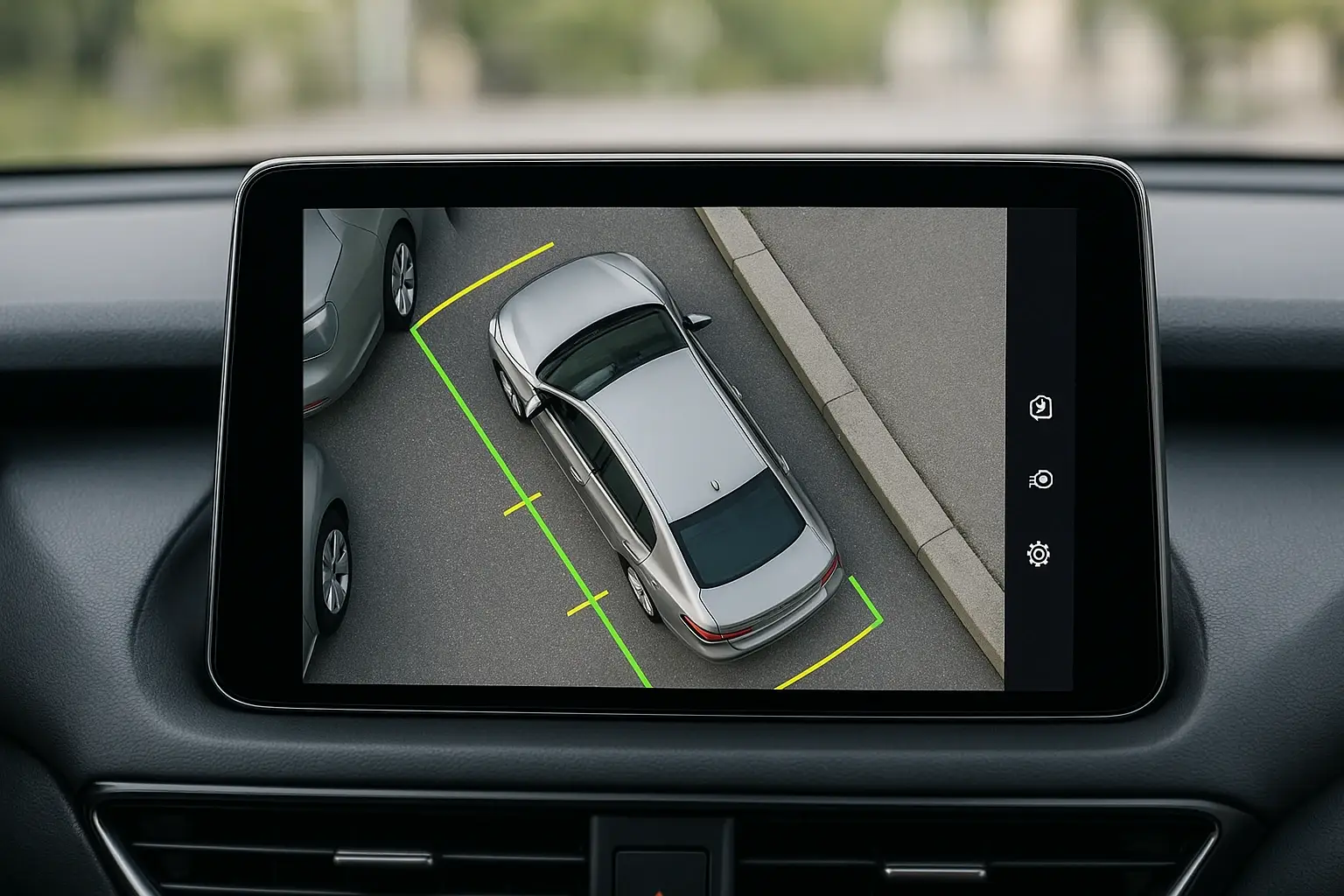
The magic behind this system is a process called "image stitching3." The car’s central computer, or ECU, takes the wide-angle, distorted feeds from cameras in the front grille, rear trunk, and under each side mirror. It then flattens these images, corrects the fisheye perspective, and digitally stitches them together in real-time. The result is a seamless overhead view that looks like you have a drone hovering over your car. It's not just for parking. I recently had to navigate a very narrow old alleyway with high stone walls. Without the 360° view, it would have been a slow, stressful process of getting out to check my clearances. With it, I could see my exact distance from each wall on the screen and glide through confidently. It also helps you spot low objects like toys or pets that are impossible to see from the driver's seat.
| Scenario | Challenge | How 360° Camera Solves It |
|---|---|---|
| Parallel Parking | Judging distance to the curb and other cars. | Provides an overhead view showing exact tire and bumper positions. |
| Narrow Garages | Avoiding scraping mirrors or side panels. | Displays a clear view of both sides of the car simultaneously. |
| Busy Parking Lots | Risk of hitting low posts or shopping carts. | Shows a complete picture of the ground around the vehicle. |
| Leaving a Driveway | Checking for small children or pets. | Eliminates the dangerous front and rear ground-level blind spots. |
Can Automatic Emergency Braking Really Prevent a Collision?
The car ahead stops suddenly. You were glancing at a street sign for just a second. AEB is the system that reacts in that critical moment, potentially preventing a devastating rear-end collision.
Yes, Automatic Emergency Braking (AEB)4 is proven to prevent collisions or significantly reduce their severity. Using forward-facing sensors like radar and cameras, it constantly monitors the road. If it predicts an imminent crash and you haven’t acted, it will apply full braking force on its own.

Modern AEB systems are sophisticated, often using "sensor fusion," which combines the strengths of radar and cameras. Radar is excellent at judging the distance and speed of other cars, even in bad weather. Cameras are great at identifying what the object is, such as a car versus a pedestrian or a cyclist. The system works in stages: it first detects a hazard, then gives you a visual and audible warning, and if you still don't react, it intervenes. One afternoon, a car parked on my right side completely blocked my view of the sidewalk. As I drove past, a teenager on a bike darted out from in front of it. Before I could even register the danger, my car's AEB system flashed a warning and slammed on the brakes. It stopped me just in time. That experience alone made me a believer in this life-saving technology.
| System Type | Primary Sensor | Best At Detecting | Operating Speed |
|---|---|---|---|
| City AEB | Camera or LiDAR | Vehicles | Low Speeds (< 50 km/h) |
| Inter-Urban AEB | Radar | Vehicles | Highway Speeds |
| Pedestrian AEB | Camera & Radar (Fusion) | Vehicles, People, Cyclists | All Speeds |
Is Blind Spot Detection a Must-Have for Highway Driving?
You check your mirrors, shoulder-check, and start to change lanes, only to hear a horn blare from a car that was perfectly hidden. Blind Spot Detection (BSD) is your extra set of eyes for these hidden zones.
Yes, for anyone who regularly drives on multi-lane roads, Blind Spot Detection is an essential safety feature. It uses radar sensors in your rear bumper to monitor adjacent lanes. If a car enters your blind spot, a light in your side mirror warns you not to change lanes.
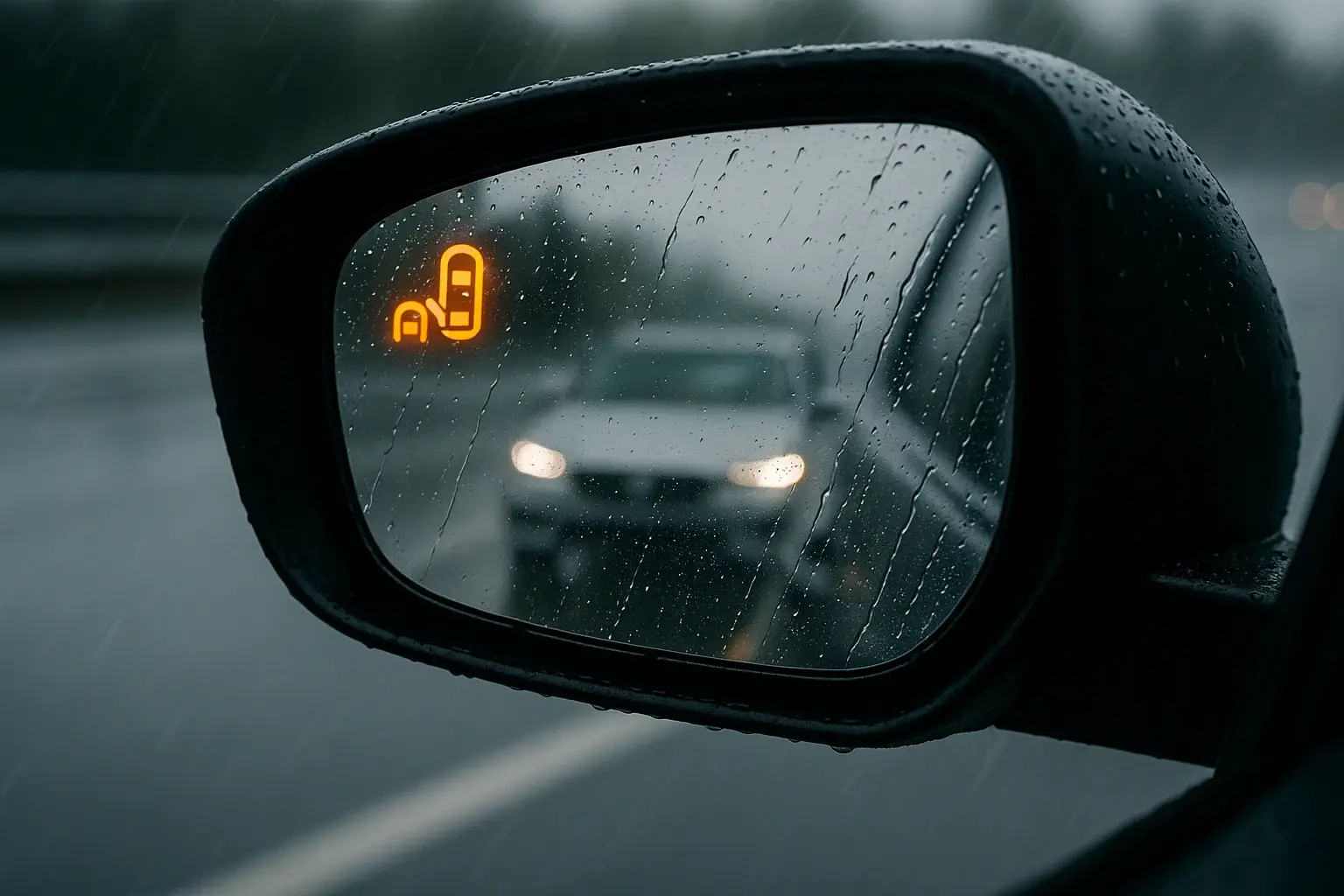
The beauty of BSD is its simplicity. It solves a complex problem with an intuitive solution. But the technology goes deeper. The same rear-facing radar sensors that power BSD also enable another fantastic feature: Rear Cross-Traffic Alert (RCTA). When you're backing out of a parking spot, RCTA watches for vehicles approaching from the left or right, outside your field of vision. If it detects an oncoming car, it gives you a loud warning. I find RCTA just as valuable as BSD. In a busy supermarket parking lot, I started backing out and my car suddenly beeped loudly, showing an arrow on the screen pointing to the right. A moment later, a car sped past behind me. I never would have seen it in time. Some advanced systems even offer "Blind Spot Intervention," which will gently steer you back into your lane if you try to merge into an occupied space.
| Feature | Blind Spot Detection (BSD) | Rear Cross-Traffic Alert (RCTA) |
|---|---|---|
| Driving Scenario | Driving forward, changing lanes | Reversing out of a parking space |
| Detects | Vehicles in adjacent lane's blind spot | Vehicles approaching from the sides |
| Warning Type | Light in side mirror, possible chime | Loud audible alert and/or visual on screen |
| Core Benefit | Prevents sideswipe accidents on the move | Prevents collisions when reversing |
Will Lane Keeping Assist Actually Steer My Car For Me?
You're on a long, boring stretch of highway. Your mind starts to wander, and the car begins to drift from the center of the lane. Lane Keeping Assist is the gentle nudge that brings you back.
Yes, Lane Keeping Assist (LKA)5 will apply a small amount of steering torque to guide your car back toward the center of the lane if it detects you are drifting unintentionally. It is not self-driving; it is a corrective safety support system designed to counter momentary inattention.
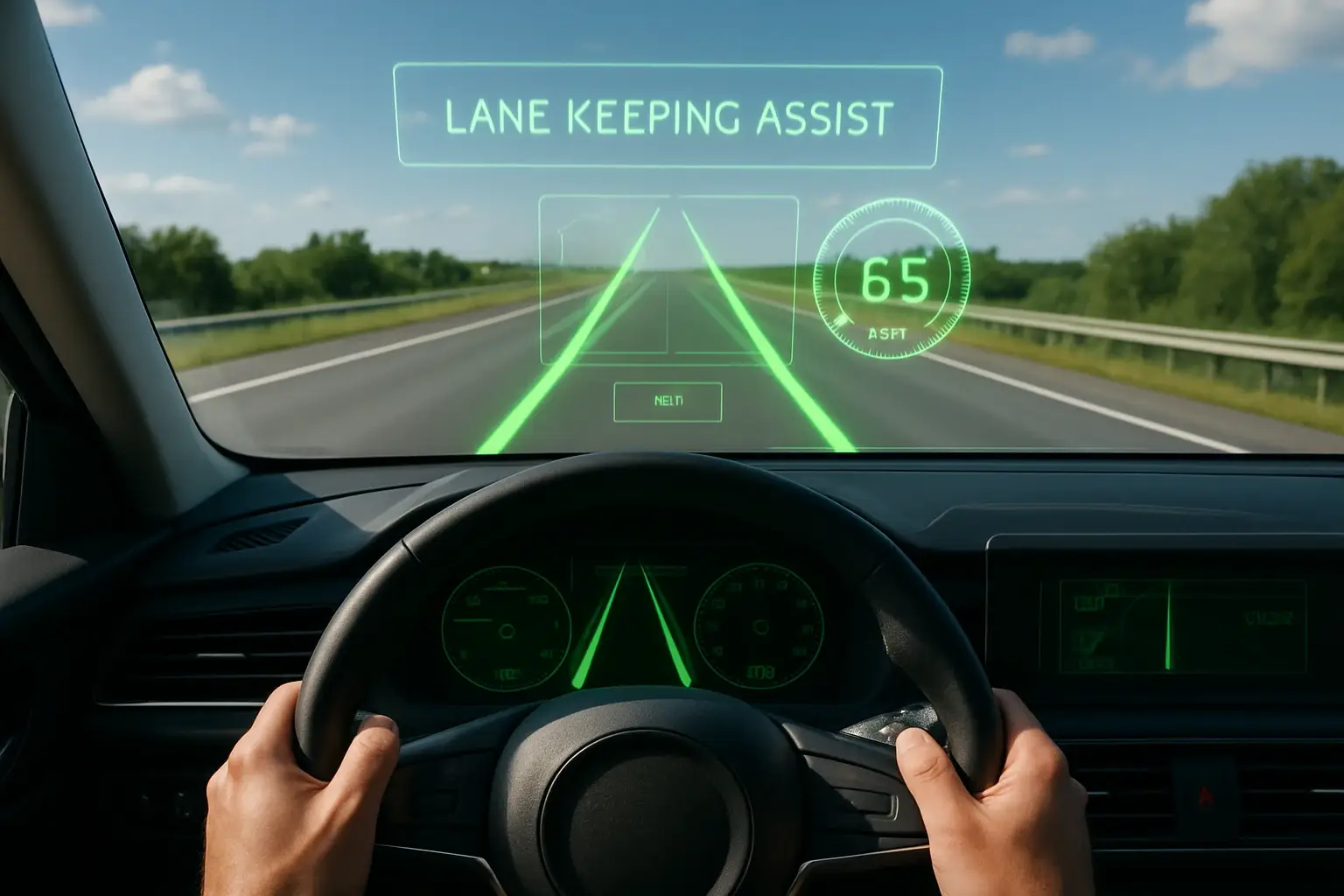
It's important to know the difference between LKA and its more advanced cousin, Lane Centering Assist (LCA). A basic LKA system is reactive; it only acts when you get close to the line. Lane Centering, on the other hand, is proactive. It is constantly making tiny steering adjustments to keep you perfectly centered in the lane. This makes driving feel much smoother and less robotic. Both systems use a forward-facing camera to read the painted lane markings. This is also their main limitation: if the lines are faded, covered by snow, or washed out by heavy rain or sun glare, the system won't work. My first car with this tech only had Lane Departure Warning, which just beeped annoyingly. My current car has Lane Centering, and it's a world of difference on long trips. It doesn't drive for me, but it handles the micro-corrections, which significantly reduces my driving fatigue.
| System Type | How It Works | Driver Feel |
|---|---|---|
| Lane Departure Warning (LDW) | Warns (beeps/vibrates) when you touch a lane line. | A passive alert, can be annoying. |
| Lane Keeping Assist (LKA) | Nudges steering back when you touch a lane line. | A reactive, corrective "bump." |
| Lane Centering Assist (LCA) | Actively steers to stay in the middle of the lane. | A proactive, continuous support. |
How Does Adaptive Cruise Control Make Traffic Jams Less Stressful?
You're stuck in stop-and-go traffic. Your foot is constantly moving between the brake and the accelerator. It's frustrating and exhausting. Adaptive Cruise Control takes over this tedious task.
Adaptive Cruise Control (ACC) revolutionizes highway driving and commutes. It uses a forward-facing radar to lock onto the car ahead, automatically maintaining a preset following distance by controlling your throttle and brakes. The best systems even work down to a complete stop and start again.
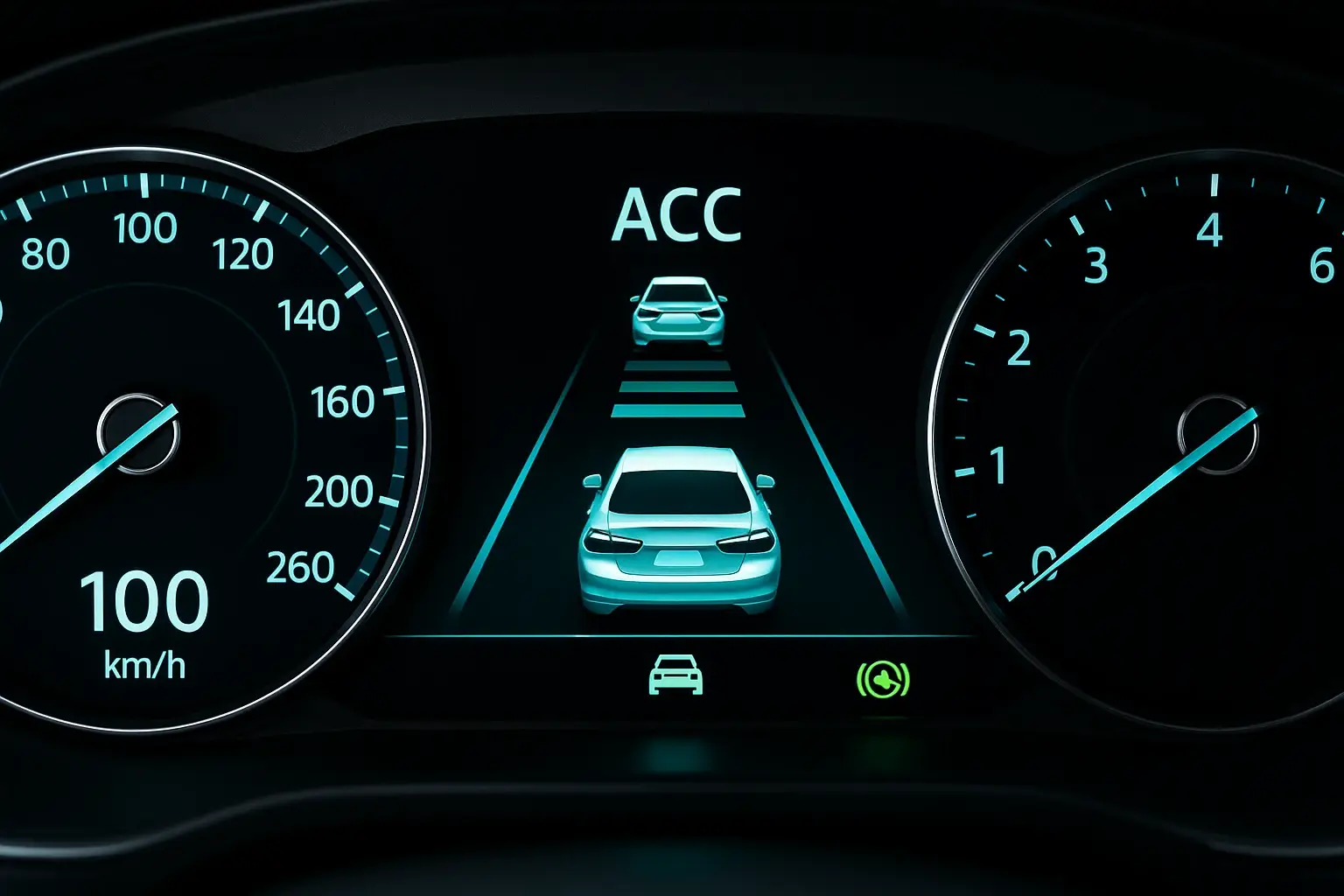
The core of ACC is its radar sensor, which constantly measures the distance and closing speed to the vehicle in front. This allows it to be much smarter than traditional cruise control. The most useful version is ACC with "Stop & Go." My daily commute used to be the worst part of my day. Now, I set the ACC when traffic starts to build up. My car slows down, stops, and inches forward with the flow of traffic all on its own. I just have to keep my hands on the wheel and stay alert. It has single-handedly reduced my driving stress by at least 80%. It's important to remember its limits, though. The radar is looking for moving objects, so it may not detect a stationary car in your lane from a complete stop, and it won't see traffic lights. You are still the driver, but ACC is an incredible tool for reducing fatigue.
| Feature | Standard Cruise Control | Adaptive Cruise Control (ACC) | ACC with Stop & Go |
|---|---|---|---|
| Function | Maintains a set speed. | Maintains a set following distance. | Maintains distance down to a full stop. |
| Traffic Use | Only for open, free-flowing highways. | Good for variable-speed highway traffic. | Excellent for heavy, stop-and-go traffic. |
| Driver Input | Constant braking/resetting in traffic. | Minimal input needed on the highway. | Manages braking and accelerating in jams. |
Conclusion
These five ADAS technologies are not just individual features; they form an interconnected ecosystem of safety. The 360° camera and RCTA protect you at low speeds, while BSD, LKA, and AEB guard you on the open road, and ACC reduces fatigue on long journeys. Embracing this technology has made me a more confident and relaxed driver, but I always remember that these systems are powerful aids, not a replacement for my own attention and judgment.
-
Get insights into how ADAS technologies improve vehicle safety. ↩
-
Explore how this technology enhances parking safety and eliminates blind spots. ↩
-
Discover the technology behind creating seamless overhead views. ↩
-
Learn about AEB's life-saving capabilities and its impact on road safety. ↩
-
Understand how LKA helps maintain lane discipline and reduces driver fatigue. ↩

